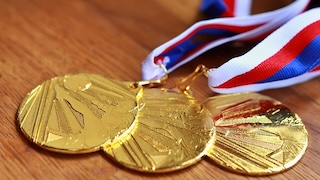TOKYO, Mar 04 (News On Japan) - Japan's ruling Liberal Democratic Party, its coalition partner Komeito, and the opposition Japan Innovation Party have reached an agreement to waive high school tuition fees. But what exactly will change under this policy?
Currently, tuition support operates on a two-tier system based on household income. Families earning under 9.1 million yen annually receive a base subsidy of 118,800 yen, regardless of whether their child attends a public or private school. For families earning less than 5.9 million yen, additional support is provided if the student attends a private high school, with a maximum total subsidy of 396,000 yen.
Under the new agreement, income limits will be removed, and the maximum combined subsidy for private school students will increase to 457,000 yen—matching the national average for private high school tuition. However, any costs beyond this amount will still need to be covered by households. This change will primarily benefit families with children in private high schools, who will receive four times the public school tuition support per student.
Public high schools have long been attractive due to their lower tuition fees. In contrast, private schools offer unique educational approaches, direct admission pathways to affiliated universities, and superior facilities, but at a higher cost. The total annual education expenses—including tuition, materials, and cram school fees—average around 600,000 yen per student at public high schools, compared to 1.03 million yen at private institutions. As the tuition gap narrows, private schools are expected to become a more viable option for families that previously ruled them out. However, this may lead to declining enrollment in public schools.
Tokyo, which has already implemented a similar subsidy of approximately 480,000 yen since last year, saw the average admission rate for metropolitan high schools drop from around 1.3 times the available slots to just 1.2 this year. Meanwhile, Osaka, which introduced a phased private school subsidy of up to 630,000 yen last year, has seen a surge in junior high school entrance exams. Education services firm Up reports that while student applications for private junior high schools have declined in Kyoto and Hyogo due to Japan’s declining birthrate, Osaka saw a 7.1% increase.
With high school tuition effectively free, more parents are considering enrolling their children in private junior high schools, even if it means stretching their budgets. This could lead to an increase in cram school attendance among elementary students, according to Up’s Yoshida, an expert on Kansai’s entrance exam trends.
A look at Japan’s last major tuition waiver policy in 2010—when public high schools nationwide became tuition-free under the then-Democratic Party government—suggests that overall education costs may not necessarily decrease. Data shows that while total education expenses per child initially dropped below 400,000 yen, they later rebounded due to rising cram school fees, reaching about 600,000 yen by 2023—higher than before the waiver.
Keio University Professor Akabayashi, an expert in education economics, warns that private school tuition waivers could have a similar effect. Even if tuition fees are covered, families may redirect the saved money into cram schools, and schools themselves may increase costs for non-tuition expenses. As a result, overall education costs may not decrease.
While the waiver aims to reduce financial burdens and promote educational equality, it may ultimately intensify competition, inadvertently fueling a new exam-driven culture.
Source: TBS















